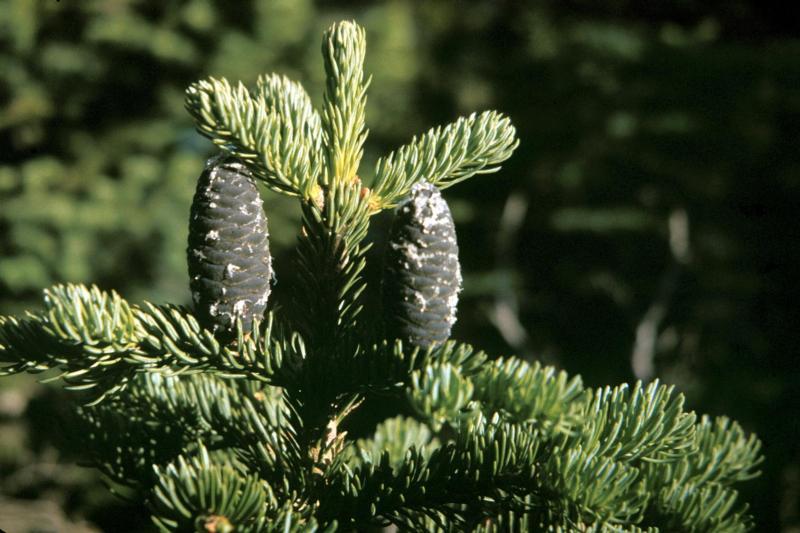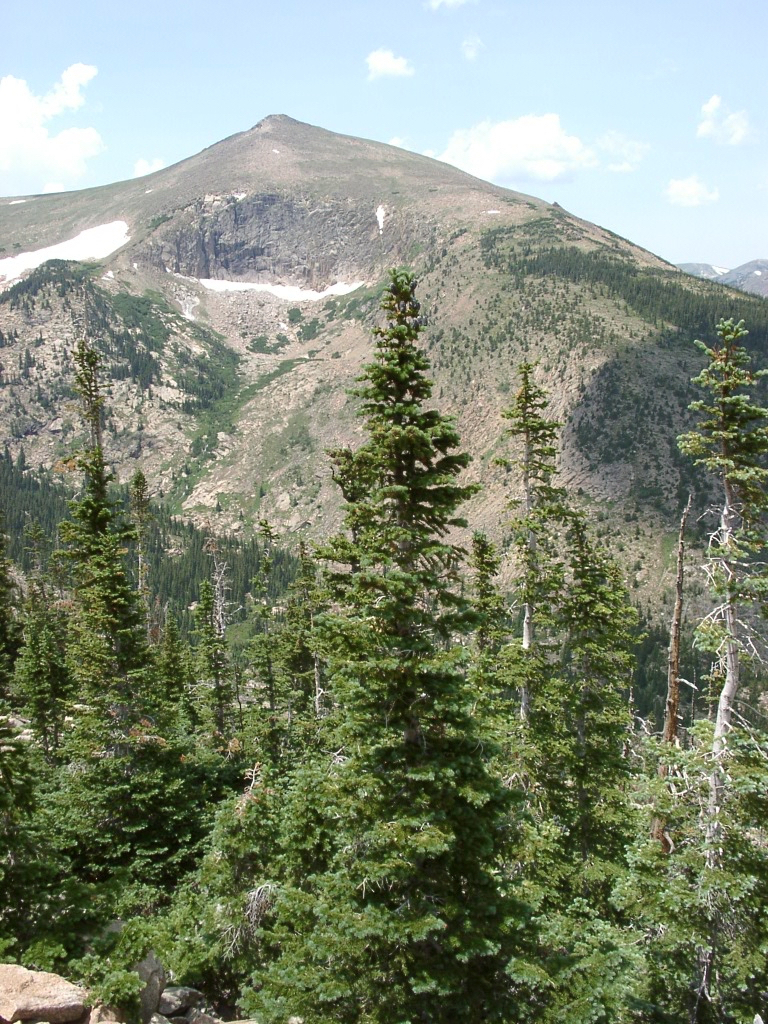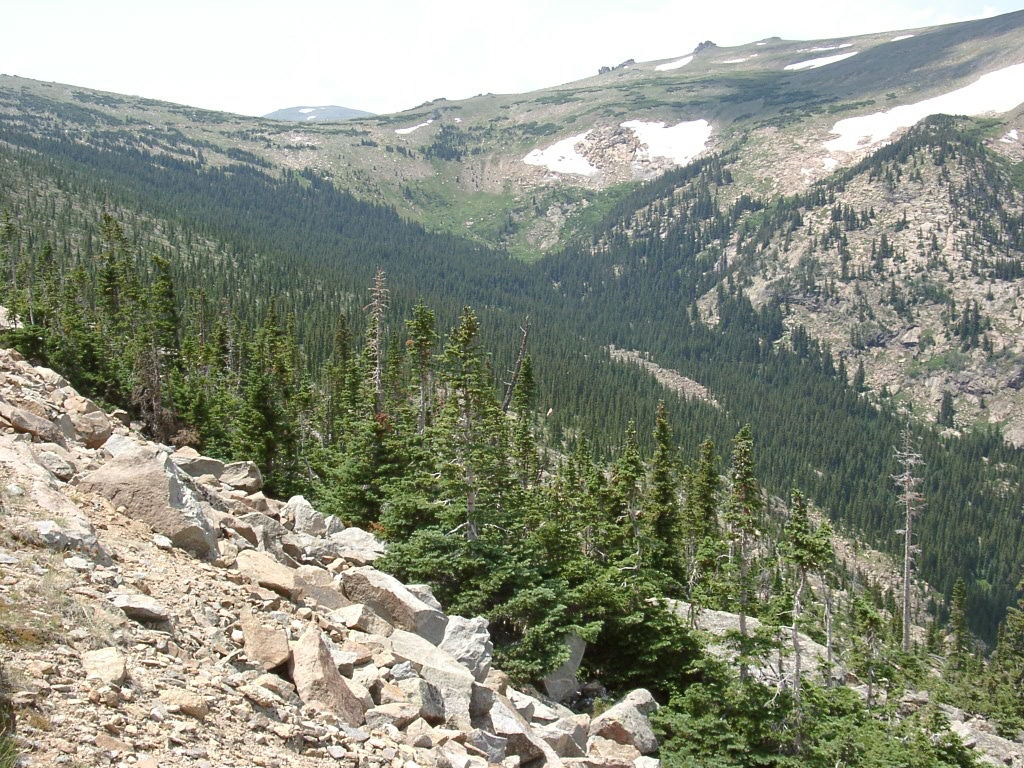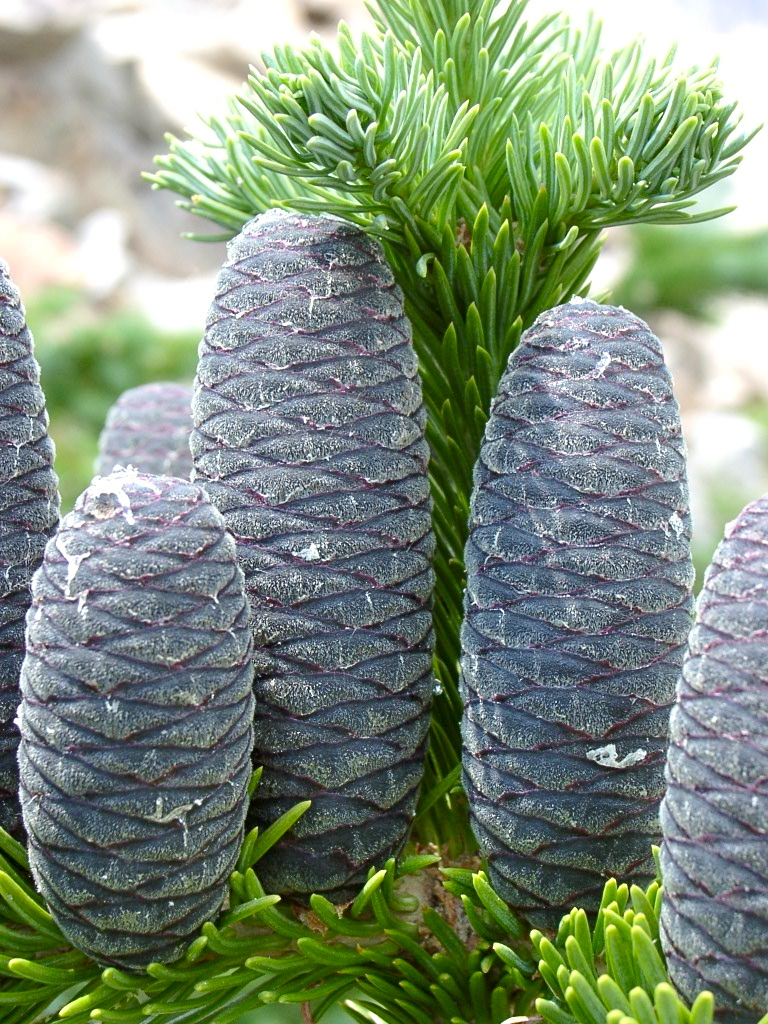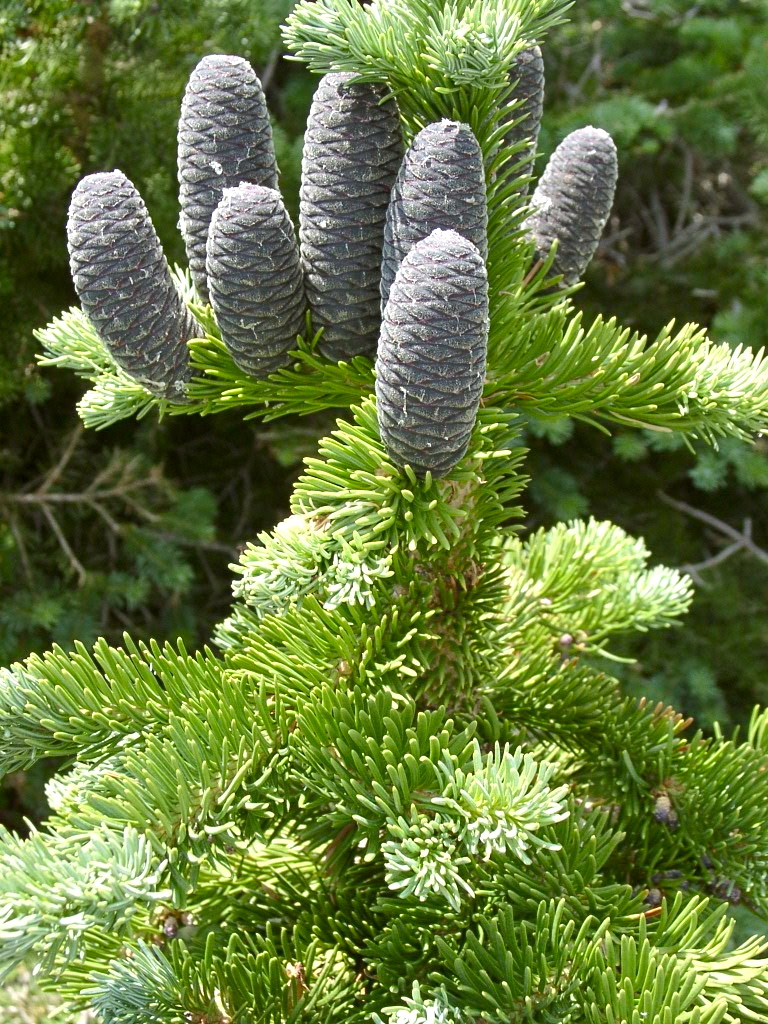Abies lasiocarpa var. bifolia, as described in 2009 by James E. Eckenwalder in Conifers of the World, The Complete Reference, is commonly known as the western or Rocky Mountain subalpine fir.
Description. Rocky Mountain subalpine fir differs from the typical species in the following ways
Distribution. This variety occurs in Canada - southern Yukon, Northwest Territories, Alberta, and British Columbia; in the United States - Washington, Oregon, Idaho, Montana, Wyoming, Colorado, New Mexico, Arizona, Utah and Nevada at elevations of 2,000 to 12,000 feet (600 - 3,700 m) above sea level in subalpine conifer forests. Var. bifolia is found growing to the alpine treeline in most of its range. In most of the Rocky Mountains, it forms a major forest type with Picea engelmannii
